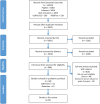Improving retention in HIV care among adolescents and adults in low- and middle-income countries: A systematic review of the literature
- PMID: 28961253
- PMCID: PMC5621671
- DOI: 10.1371/journal.pone.0184879
Improving retention in HIV care among adolescents and adults in low- and middle-income countries: A systematic review of the literature
Abstract
Introduction: Adolescents living with HIV are an underserved population, with poor retention in HIV health care services and high mortality, who are in need of targeted effective interventions. We conducted a literature review to identify strategies that could be adapted to meet the needs of adolescents living with HIV.
Methods: We searched PubMed, Web of Science, Popline, USAID's AIDSFree Resource Library, and the USAID Development Experience Clearinghouse for relevant studies published within a recent five-year period. Studies were included if they described interventions to improve the retention in care of HIV-positive patients who are initiating or already receiving antiretroviral therapy in low- and middle-income countries. To assess the quality of the studies, we used the NIH NHLBI Study Quality Assessment Tools.
Results and discussion: Of 13,429 potentially relevant citations, 23 were eligible for inclusion. Most studies took place in sub-Saharan Africa. Only one study evaluated a retention intervention for youth (15-24 years); it found no difference in loss to follow-up between a youth-friendly clinic and a family-oriented clinic. A study of community-based service delivery which was effective for adults found no effect for youths. We found no relevant studies conducted exclusively with adolescent participants (10-19 years). Most studies were conducted with adults only or with populations that included adults and adolescents but did not report separate results for adolescents. Interventions that involved community-based services showed the most robust evidence for improving retention in care. Several studies found statistically significant associations between decentralization, down-referral of stable patients, task-shifting of services, and differentiated care, and retention in care among adults; however, most evidence comes from retrospective, observational studies and none of these approaches were evaluated among adolescents or youth.
Conclusions: Interventions that target retention in care among adolescents living with HIV are rare in the published literature. We found only two studies conducted with youth and no studies with adolescents. Given the urgent need to increase the retention of adolescents in HIV care, interventions that are effective in increasing adult retention in care should be considered for adaptation and evaluation among adolescents and interventions specifically targeting the needs of adolescents must be developed and tested.
Conflict of interest statement
Figures
References
-
- UNAIDS. Global Report [http://files.unaids.org/en/media/unaids/contentassets/documents/epidemio....
-
- Kranzer K, Govindasamy D, Ford N, Johnston V, Lawn SD. Quantifying and addressing losses along the continuum of care for people living with HIV infection in sub-Saharan Africa: a systematic review. Journal of the International AIDS Society. 2012;15(2):17383 doi: 10.7448/IAS.15.2.17383 - DOI - PMC - PubMed
-
- PEPFAR. PEPFAR 3.0 Controlling the Epidemic: Deliving on the Promise of an AIDS-free Generation. 2014.
-
- WHO. Consultation on HIV differentiated service delivery models for specific populations and settings: Pregnant and breastfeeding women, children, adolescents and key populations. Geneva, Switzerland: World Health Organization; 2016.
-
- UNICEF. For every child, end AIDS—Seventh stakeholding report. New York, NY; 2016.
Publication types
MeSH terms
Substances
LinkOut - more resources
Full Text Sources
Other Literature Sources
Medical


